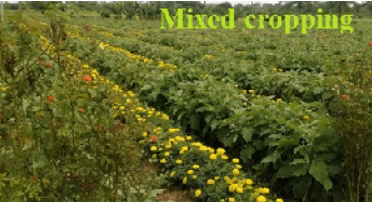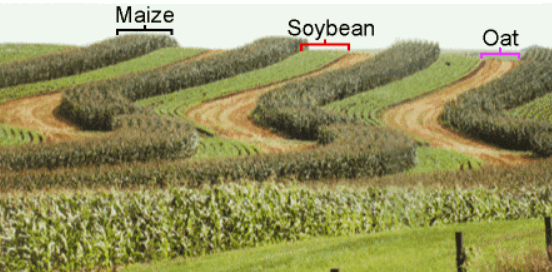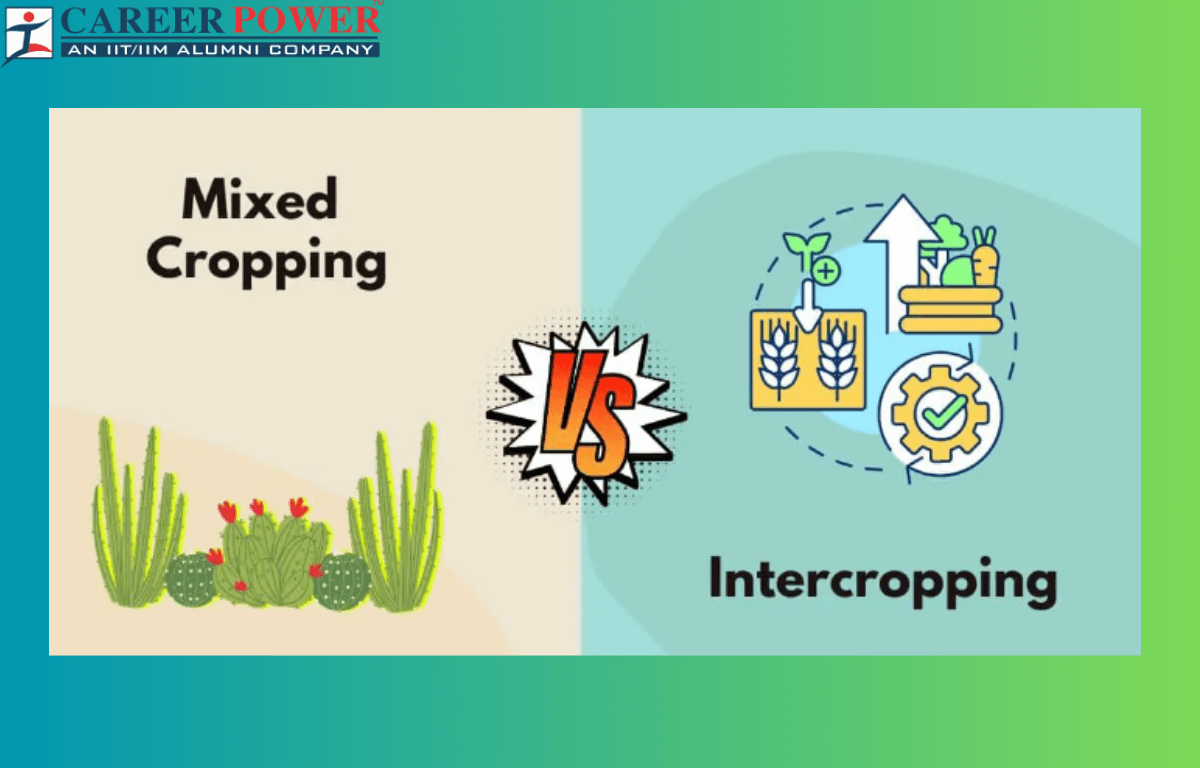Cropping refers to growing plants in a designated area. Cropping can be done in many ways such as mixed cropping and intercropping. Mixed cropping involves cultivating different crops together without distinct patterns, promoting biodiversity and minimizing risks. Intercropping, on the other hand, entails planting different crops in organized rows, maximizing resource use efficiency, and preventing soil nutrient depletion. Both methods enhance agricultural sustainability by diversifying crops, optimizing space, and improving overall productivity.
Mixed Cropping and Intercropping
Mixed cropping and intercropping are agricultural practices that involve growing two or more crops together in the same field, during the same growing season. Both practices promote biodiversity in agricultural fields, enhance soil fertility, and can provide farmers with a more stable yield, as they are less susceptible to the failure of a single crop.
What is Mixed Cropping?
Mixed cropping is an agricultural practice in which two or more different crops are grown together in the same field simultaneously. This method involves cultivating crops with different growth habits, nutrient requirements, and maturity periods in proximity to each other. Mixed cropping helps farmers maximize the use of available resources such as sunlight, water, and soil nutrients, leading to improved productivity and reduced risk of crop failure. It also enhances biodiversity in agricultural systems and provides a form of insurance against unpredictable environmental conditions.

What is Intercropping?
Intercropping is an agricultural practice in which two or more different crops are grown in proximity to one another within the same field. Unlike mixed cropping, intercropping involves a specific planting pattern where crops are alternately arranged in rows or blocks. These crops may have different growth habits, maturity periods, and nutrient requirements.

Intercropping offers several advantages, including efficient use of available resources such as sunlight, water, and soil nutrients. The different crops in an intercropping system can complement each other, for example, by preventing weed growth, utilizing different layers of the soil, or attracting different beneficial insects. This practice enhances biodiversity in agricultural fields, reduces the risk of total crop failure, and can lead to increased overall yield and income for farmers.
Difference Between Mixed Cropping and Intercropping
Mixed cropping and intercropping are both agricultural practices that involve growing multiple crops in the same field, but they differ in their arrangement and management. In summary, mixed cropping involves planting different crops without a specific pattern to optimize the use of resources and enhance overall productivity.
| Difference Between Mixed Cropping and Intercropping | ||
| Aspects | Mixed Cropping | Intercropping |
| Definition | Mixed cropping is the process of cultivating two or more crops together in the same field without a specific pattern. | Intercropping is the process of growing two or more crops in planned rows or patterns within the same field. |
| Arrangement | Crops are mixed together and sown without distinct rows or patterns. | Crops are planted in separate rows or specific patterns to optimize resource utilization. |
| Management | Less organized and may not involve careful planning. | More organized, with planned arrangements for efficient resource use. |
| Benefits | Provides insurance against the failure of one crop, as other crops may still thrive. | Optimizes resource utilization, reduces competition, and enhances overall productivity. |
| Risk | If one crop fails, there is still a chance that other crops may survive. | Reduced risk as crops are selected for their complementary characteristics, reducing competition and improving overall resilience. |
| Example | An example of mixed cropping is planting wheat and chickpeas together without specific rows. | An example of intercropping is planting maize in alternating rows with beans for mutual benefits. |
Importance of Mixed Cropping and Intercropping
Mixed cropping and intercropping are important agricultural practices that offer several benefits. Mixed cropping and intercropping are crucial techniques for sustainable, diversified, and resilient agriculture, ensuring food security and environmental sustainability for farming communities.
- Diversity in Production: Mixed cropping and intercropping allow farmers to cultivate different crops together in the same field. This diversity in crops helps in maximizing the overall yield of the land. If one crop fails due to specific environmental conditions, the other crops may still thrive, ensuring a more stable food supply.
- Optimized Land Use: Intercropping and mixed cropping efficiently utilize available space, sunlight, and soil nutrients. Different crops have different requirements, so they can coexist without competing intensely for the same resources. This maximizes the use of land and enhances its productivity.
- Natural Pest Control: Planting different crops together can deter pests. Some crops repel pests that might otherwise damage neighboring plants. This reduces the need for chemical pesticides, promoting sustainable and eco-friendly farming practices.
- Improved Soil Fertility: Different crops have different nutrient requirements. When grown together, they can help maintain and enhance soil fertility. For example, leguminous crops in an intercropping system can fix nitrogen in the soil, benefiting other crops that require nitrogen growth.
- Risk Mitigation: By growing a variety of crops in the same field, farmers reduce the risk associated with relying on a single crop. If market prices fluctuate or if a particular crop is affected by disease or adverse weather conditions, farmers still have other crops to rely on for income and sustenance.
- Water Conservation: Certain crops in an intercropping system can create a microenvironment that conserves water. For instance, taller crops can provide shade, reducing evaporation from the soil and preserving moisture, which is especially beneficial in regions facing water scarcity.



 50 Vegetables Name for Kids in English a...
50 Vegetables Name for Kids in English a...
 Food Chain: Definition, Types, Examples,...
Food Chain: Definition, Types, Examples,...
 Human Respiratory System: Definition, Di...
Human Respiratory System: Definition, Di...













